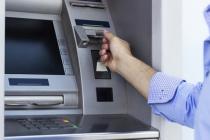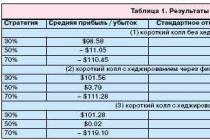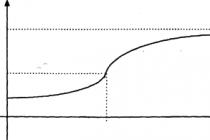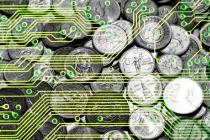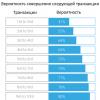The US Federal Reserve announced that on October 8, 2013, a new type of $100 banknote will begin circulation. This is what the new 100 bucks bill looks like.

Let's see how the new hundred-dollar bill differs from the old one. The differences in design are quite serious, in addition, new security elements have been introduced.


Key security features of the new $100 bill:
3D protective tape. First you need to look at the blue tape at different angles. Depending on the angle of inclination, the image of the bells changes to the number 100. If you tilt the banknote back and forth, the bells and numbers 100 shift from side to side. If you tilt the banknote left and right, they move up and down. Important! The ribbon is woven into the paper, not printed on it!
Bell in inkwell. Tilt the note, the color of the bell should change from copper to green, and the bell will appear to appear in and out of the inkwell.
Additional security elements.
1. Watermark in the form of a portrait. If you look at the banknote against the light, you will see a fuzzy image of Benjamin Franklin in the empty space to the right of the portrait. The image is viewed from both sides of the banknote.
2. Security thread. Examine the banknote against the light and see a vertical security thread in the structure of the paper to the left of the portrait. On it you can see the inscription “USA” and the number 100,
which are placed vertically along the entire length of the thread and are visible from both sides of the banknote. In ultraviolet rays, this strip glows pink.
3. Color changing number 100. Tilt the note and you will see the color of the number 100 in the lower right corner of the front of the note change from copper to green.
4. Relief print. Run your finger up and down Benjamin Franklin's shoulder on the left side of the bill. Here the paper should be rough to the touch. The relief print is noticeable on the entire surface of the 100 dollar bill, this is a characteristic sign of its authenticity.
5. The number 100 is golden in color. The large number 100 on the back of the banknote will help people with visual impairments determine its denomination.
6. Microprinting. Find the words in small print: THE UNITED STATES OF AMERICA - on the collar of Benjamin Franklin's jacket; USA 100 – around the free space containing a watermark in the form of a portrait; ONE HUNDRED USA - along the gold feather, and small numbers 100 - along the edges of the banknote.
How can I find out where a new banknote is printed? On the new $100 bills printed in Fort Worth, Texas, the small letters FW appear in the upper left corner of the front of the bill to the right of the number 100. If the note does not have the FW symbol, it is printed in Washington, DC. Detailed information -
100 US dollar banknote
100 US dollar banknote

http://aferizm.ru/images/100_us_dol_o.jpg

Banknote size
156x67mm. Since 1990 - 157x67 mm. The paper is tinted, has a light yellow tint, and contains randomly embedded protective fibers of red and blue colors. Since February 2011, the banknote has been light blue.

Portrait of Benjamin Franklin, offset to the left of center, below it is the inscription "FRANKLIN". On the right, where the portrait of previous series of dollars was placed, there is a watermark and a security thread.

On the left side of the portrait is the Federal Reserve Seal (black), above which are a letter and number indicating the Federal Reserve Bank that issued the note. On the right side of the portrait is located: the seal of the State Treasury (green). In the upper left and lower right corners of the banknote there is a serial number - a combination of eight numbers and three letters. The first letter indicates the series number. The second letter is the same as the letter indicating the Federal Reserve Bank. Eight digits indicate the serial number of the banknote in a given series. The last letter indicates how many times this number was used in the series. “FEDERAL RESERVE NOTE” is printed above the top serial number. The denomination “100” is printed in the corners of the banknote. In the lower left corner there is a control letter with the quadrant number. In the lower part to the right of the portrait there is a control letter with the number of the cliche of the front side of the banknote. In the lower part to the left of the portrait is the year of issue “SERIES 1996”. The signatures of the U.S. Treasury and Treasury Department officials are printed on the lower left and lower right sides of the note. In the lower right part, the verbal designation of the banknote's denomination is printed on the guilloche ornament. In the upper right part of the banknote is the inscription “THE UNITED STATES AMERICA”.

The reverse side of the banknote depicts the Palace of Independence, with the inscription “INDEPENDENCE HALL” underneath it. The denomination “100” is printed in the corners of the banknote. The inscription “THE UNITED STATES OF AMERICA” is printed in the upper central part, followed by the text “IN GOD WE TRUST”, and the inscription “ONE HUNDRED DOLLARS” is printed at the bottom of the note. In the lower right corner is the cliche number of the reverse side of the banknote.

Main security features of a banknote
:
1. Microprinting on the front side of the banknote: the text “USA100” is printed in several rows inside the denomination number in the lower left corner; The text "THE UNITED STATES OF AMERICA" is printed on the lapel of Franklin's coat.
2. The paper contains a visible security thread with repeating microtext “USA 100”, readable from the front and back of the banknote. The security thread is located vertically, to the left of the portrait.
3.The watermark is located on the unprinted field on the right side of the note and repeats the portrait of Benjamin Franklin.
4. In the lower right corner of the front side is the denomination of the banknote “100”, made with paint that changes color from green to black when the banknote is rotated.
5.In ultraviolet rays, the security thread has a red glow. On the 1996 banknotes, synthetic thread with the repeating text “USA 100” glows pink under UV light in a wave-like manner.
6. Thin concentric lines form the background for the portrait on the front side and for the Palace of Independence on the back side of the banknote. On the copy, when the banknote is reproduced on reprographic equipment, weak moire (dark and light areas) appears in the indicated places.
7. Inside the number “100” printed on the left side of the banknotes there is microtext “USA 100”. Franklin's jacket has microtext "United States of America" printed on it.
The front side of the banknote is made using metallographic printing. The inscriptions “THE UNITED STATES OF AMERICA, ONE HUNDRED DOLLARS” have an increased thickness of the paint layer and are well perceived to the touch. Serial number, Federal Reserve and State Treasury seals are letterpress printed. The reverse side of the banknote is made using metallographic printing.
In addition, on genuine banknotes the portrait is made clearly and in contrast, as if with a backing. On counterfeit bills it is lifeless and unrelief. The details merge with the background, which is usually darker than the original or has characteristic inclusions.

Stamps
Printed in green, round. On genuine dollars, the images on the seals are clearly visible, the teeth are smooth and sharp. The stars inside it look clear under a magnifying glass. On fake ones, they may be blurred, uneven, or have tears. With the release of the new $100 bills, the repeated inscription “The United States of America” appeared around the portrait. Old banknotes always indicated the Federal Reserve District in which the banknote was issued (issued), now this is the single seal of the US Federal Reserve System.

Serial number
The serial number, consisting of 8 digits and 3 letters on the front side of the banknote in the upper left and lower right corners, is clearly visible and printed on genuine banknotes. The digits of the number are located at equal intervals and on the same line. The numbers are in the same color as the treasury seals. On counterfeit banknotes, the serial number may differ significantly from the color of the print or have a different shade. The digits of the number may be unevenly spaced, higher or lower, or have different spacing.
Borders
On a real banknote, the outer lines are distinct. On a fake line, even the ornament made in the form of curls, when counterfeited, can be unclear or not completely printed. Keep in mind that regardless of the denomination of the bill, their sizes are absolutely the same, that is, when placing a bill on a banknote, their sizes must completely match.

Paper
Red and blue microfibers are also used to protect banknotes. When counterfeiting, counterfeiters, as a rule, cannot introduce these fibers into the structure of the paper, but only apply them to the surface of the bill. Fibers can be removed from a real bill, but they will rub off on a counterfeit one. In addition, the security thread glows red when illuminated by ultraviolet light.
Dye
It is a common belief that the paint should not be completely erased from genuine dollars; no, leaving a slight trace is a sign of the authenticity of the bill. To more reliably protect the bills, the US Treasury took additional protection - a metal strip with microprinting appeared on the 100 dollar bill.
Color change
When viewing the bill from top to bottom, it will appear green; if viewed at an angle, it will appear black.
Other methods of protection
100 US dollars
Owners of dollars should know that banknotes dating back to 1928 can be purchased and sold. In the USA, dollars of ALL ISSUES have been in circulation since the 18th century, but dollars from the 18th -19th centuries. have numismatic value and are worth more than face value.

In 1996, the United States issued a new type of $100 banknote, which had a number of new security elements, including a watermark duplicating the portrait of the president. Synthetic thread with repeating "USA 100" text glows pink under UV light in waves. The denomination (100) printed in the lower right corner of the front side of the bill is green when viewed at a right angle, and black when viewed at an angle. Inside the number “100” printed on the left side of the banknotes there is microtext “USA 100”. Franklin's jacket has microtext "United States of America" printed on it. Banknotes of other denominations ($10,20,50) of the 1996 model have similar security elements.

Since the fall of 2003, the United States has issued new, multi-colored twenty-dollar bills. On the new money, the background behind the enlarged portrait of President Andrew Jackson is peach-colored, and the national symbol of American freedom, a bald eagle, that appears to the left of the portrait and the inscription “TWENTY USA” to the right are blue. Specialists from the anti-counterfeiting department Secret Service claim that the new dollar is one of the most secure currencies in the world. The newborn dollar inherited the main degrees of protection of its ancestor - a watermark, a security thread and the number “20” changing in color. “Old” dollars remain in circulation and will be withdrawn gradually. In 2004 and 2005, the 50- and 100-dollar bills were repainted, but in different colors. I haven’t decided what to do with the $5 and $10 bills yet.
New $100 - Blue
Since February 2011, a new one hundred dollar banknote has been introduced into circulation in the United States.

New $100
were due to go into circulation in February 2011. But four months before the release, the Fed admitted that it had encountered technical difficulties: the test notes were unusable. It took the Federal Reserve 2.5 years to solve the problems, and new banknotes were put into circulation by the US Federal Reserve only on October 8, 1013.
The banknote received not only an atypical design for an “American”, but also the most advanced developments such as 3D elements. So it will be much more difficult to fake a new product.
The banknote changed its usual gray-green color
: The new Franklins received a blue 3D ribbon and copper-colored holograms. The holographic images on this banknote are special - for the first time they are not printed on paper, but are “woven” into it.
$100 bills are the most widely circulated in the world - and therefore the most frequently counterfeited. The Fed expects that changes in printing technology will make life more difficult for fraudsters.
Americans rarely hold hundred dollar bills in their hands. Overseas, the “five” and “twenty” are in use. But in Russia, the 100 dollar bill is the most popular.
The new one hundred dollar bill, of course, has retained its face - it is still decorated with the image of one of the founding fathers of the United States, Benjamin Franklin. But the new money can no longer be called “green” - rather light blue. And in general, the developers of the new design tried to get away from the monochrome solution that is familiar to everyone. The bill is replete with not just colored details, but also chameleon elements (for example, an image of a bell in an inkwell and the number “100”, placed next to a portrait of Franklin, change color from copper to green when tilted). All for the sake of protection from counterfeiters.
The new “one hundred dollars”, according to Deputy Director of the US Federal Reserve Board of Governors Michael Lambert, will be one of the most secure in the world. It took about a decade to develop the security elements. So, when creating a new type of banknote, the most advanced technological developments were involved. The use of almost a million microlenses woven into the paper creates the illusion of movement of the number "100" and the images of bells on the front of the banknote. In addition to three-dimensional images, watermarks, 3D security thread, color-variable images, relief prints, microprinting and much more are used.
Such banknotes will not appear in Russia any time soon. There is no reason to rush. No one is going to take the old $100 bills out of circulation. Because all U.S. federal notes issued since 1861 are legal tender as long as 55% of the note area is retained
On October 8, the US Federal Reserve issued an updated $100 banknote.

New degrees of protection
Blue banknote: blue 3D security tape
When turned, the bells depicted on it change to the number 100
The inscription ONE HUNDRED USA along the gold pen
To the right of the image of Benjamin Franklin there is a watermark with his image
Franklin's collar says THE UNITED STATES OF AMERICA
Objects depicted on the banknote change colors when rotated.

The largest denomination of currency in the United States since 1969 is the $100 bill. In 1969, President Richard Nixon ordered the production of banknotes to cease. At the moment, tickets from the 1996-2009 series are in circulation.
Specification 100 US dollars
Banknote size: width is 155.956 mm, height 66.294 mm. The weight of the bill is 1.4 grams, packs of 100 US dollars are made of 100 pieces. One hundred dollar bills have been issued since 1862. The obverse of the ticket features the image of B. Franklin, and the reverse shows the Independence Hall building. B. Franklin is one of the US statesmen who did not serve as president.
 American paper money has an expiration date. For a 100 US dollar banknote, the period is 89 months; after this period, old bills are withdrawn from circulation. Money is printed not on paper, but on a material that is 75% cotton with the addition of linen. In order for a banknote to tear, it must be bent up to 4000 times. Banknotes that are partially or completely damaged can be exchanged free of charge. Replacement is made only after an examination.
American paper money has an expiration date. For a 100 US dollar banknote, the period is 89 months; after this period, old bills are withdrawn from circulation. Money is printed not on paper, but on a material that is 75% cotton with the addition of linen. In order for a banknote to tear, it must be bent up to 4000 times. Banknotes that are partially or completely damaged can be exchanged free of charge. Replacement is made only after an examination.
70% of the American money supply is made up of 100 dollar bills. They rank second among American banknotes in terms of frequency of counterfeiting. The cost of producing one hundred dollar bill is 12 cents. Various elements are used to protect banknotes. The main ones are: watermarks, microprinting, magnetic ink, holography, fibrous inclusions, relief prints, microtext.
The 2006 series 100 dollar bills are light yellow in color and contain red and blue fibers and a holographic security thread. B. Franklin's image is offset to the left of center. The right side has a portrait watermark and the left side has a security thread. The serial number is located in the upper left corner and lower right corner on the front side. The size of banknotes of different denominations is the same.
New banknote of the 2009 series
The result of ten years of development was the release of a new $100 banknote. The release of the new banknote was planned for 2009, but due to technical problems, the banknote came into circulation only on October 8, 2013. The latest developments using 3D technologies were applied. The color of the bill acquired a blue tint, the portrait became larger and without an oval frame. The bill contains chameleon elements. Three-dimensional images, watermarks, colored elements, microprinting are the main differences between security elements.
The inkwell with the emerging bell is an important security feature on the new 2009 Series $100 bill.
 A three-dimensional security tape is woven into the fibers of the banknote. When the banknote is rotated, images of the number 100 appear on the ribbon. The image of a bell and the number 100 in the lower right corner of the obverse is applied using optical paint, which changes the shade of the design from copper to green. A gold feather appears on the front side, along which there is an inscription – ONE HUNDRED USA.
A three-dimensional security tape is woven into the fibers of the banknote. When the banknote is rotated, images of the number 100 appear on the ribbon. The image of a bell and the number 100 in the lower right corner of the obverse is applied using optical paint, which changes the shade of the design from copper to green. A gold feather appears on the front side, along which there is an inscription – ONE HUNDRED USA.
Dollars have raised parts that can be felt to the touch. There is a sense of roughness in the portrait of B. Franklin, made using the intaglio printing method. The security thread reads the abbreviation USA and the numbers 100, which are placed vertically and visible on both sides. On the reverse there is an additional number 100 of increased size, located vertically.
To check the authenticity of dollars, you need to do three steps: look, twist, touch. First of all, we carefully examine the money, check the serial numbers of the left and right sides, hold the watermarks and protective tape, thread to light, and check for the presence of a hologram. We determine by touch the presence of embossed protective elements.
Circulation of new and old banknotes
 The prevailing bills in circulation in the hands of Americans are 20 and 5 dollar bills. 100 dollars is in demand only in foreign countries. All money issued in the United States since 1861 is recognized and accepted for settlement at its full value without limitation. The government has never devalued American money. Since 1996, the hundred dollar protection has been improved by adding thin background lines and using optical paint, and one letter has been added to the serial number.
The prevailing bills in circulation in the hands of Americans are 20 and 5 dollar bills. 100 dollars is in demand only in foreign countries. All money issued in the United States since 1861 is recognized and accepted for settlement at its full value without limitation. The government has never devalued American money. Since 1996, the hundred dollar protection has been improved by adding thin background lines and using optical paint, and one letter has been added to the serial number.
There is no need to exchange old 100 dollar bills for new ones, since no one restricts the circulation of banknotes of different series. Old banknotes will be gradually withdrawn from circulation as they wear out. According to the US Federal Service, there are 1.2 trillion dollars in circulation, two-thirds of this amount is placed abroad, mainly in hundred-dollar bills.
Fraudsters counterfeit American money more often than other currencies due to its demand. They masterfully make a 100 dollar bill from 5 dollars; 54% of all counterfeits are made using this method. Using modern digital printing technologies, counterfeiters are increasing the volume of counterfeit banknotes. Only constant changes in the design and degree of protection, the dissimilarity of banknotes of different denominations, and improvements in size make the work of scammers more difficult. In the situation with dollars, you need to be aware of all the innovations introduced by the Treasury, so as not to become the owner of a perfect fake.
Instructions
The one-dollar bill depicts George Washington, the first president of the United States, who held this post from 1789 to 1797, a prominent figure in the first American bourgeois revolution, and commander-in-chief of the army during the Revolutionary War. Washington was distinguished by extraordinary honesty in his dealings with people. The same president is also depicted on the 25 cent coin.
The third president, Thomas Jefferson, is featured on the $2 bill. He received this honor as an active leader of the first American bourgeois revolution, an outstanding politician, diplomat and philosopher. He was one of the first to develop the doctrine of separation of church and state. By the way, this same person is immortalized on 5-cent coins.
On 5- there is a portrait of the 16th US President Abraham Lincoln, in whom slavery was abolished in America and blacks gained freedom. Despite the fact that African Americans gained equal rights with whites only in the second half of the 20th century, the process of their liberation began under Lincoln. In addition, during the Civil War of 1861-1865, it was Lincoln who directly led the Confederate troops and led them to victory. His portrait also appears on 1-cent coins.
On the 10 dollar bill there is an image of Alexander Hamilton, the first US Secretary of the Treasury, a prominent statesman, ideologist and leader of the Federalist Party, who stood at the origins of its creation. Developed a program for the accelerated commercial and industrial development of the United States, the creator of the American national currency - the dollar.
The $20 bill features the 7th President of the United States, Andrew Jackson, who, along with Hamilton, is considered the founding father of the dollar. Founder of the Democratic Party, first governor of Florida. Interesting fact: Jackson was a staunch opponent of paper money and the National Bank. Now 20- with his portrait is faked more often than others. Although over the years his portrait was printed on bills of 5, 10, 50, 1000 and 10,000 dollars.
50- carries a portrait of Willis Grant, 18th President of the United States, Civil War hero, political and military leader. During the American Civil War, he commanded troops and rose to the rank of army general. In 2005, the idea was born to replace Grant on this bill with the image of Ronald Reagan, but for various reasons the idea was never brought to life
The $100 note features a portrait of Benjamin Franklin, Revolutionary War leader, scientist, essayist, journalist, publisher and politician. Franklin is the only US statesman whose signature is on the three most famous documents in America - the Declaration of Independence, the Constitution and the Treaty of Versailles of 1783. By the way, Benjamin Franklin became the first American admitted to the Russian Academy of Sciences as a foreign member.
Dollars in modern Russia have been actively circulating since the 90s of the last century, when they were even accepted as payment in stores. Are you wondering which US presidents are depicted on the most popular dollar bills?! Let's look at each of them!
1 US dollar depicts the first president and founding father of the United States - George Washington:

The President's image is on the $2 bill. Thomas Jefferson- one of the authors of the Declaration of American Independence.
The $5 bill features Abraham Lincoln, the 16th President of the United States, who ended slavery:
There is a portrait on the $10 bill. Alexander Hamilton. This is one of two people whose portrait is depicted on the bill who was not the President of the United States. He was the Minister of Finance.
The US $20 bill features the seventh President of the United States, Andrew Jackson:
Ulysses Grant is pictured on the $50 bill:
The famous American politician and one of the leaders of the American War of Independence, Benjamin Franklin, is depicted on the 100 dollars:
Note:
There are several more collectible banknotes that can be found very rarely, but nevertheless they exist.
500 dollars- portrait of President McKinley
1000 dollars- Image of America's 22nd President Glover Cleveland
5000 dollars- Finance Minister Simon Chase
10000 dollars- portrait of James Madison - father of the US Constitution
100,000 dollars— image of Woodrow Wilson, 28th President of the United States of America
Presidents on coins:
Portraits of US presidents (and not only!) are printed not only on banknotes, but even on coins.
1 cent (penny)- Abraham Lincoln
5 cents (nickel)— Thomas Jefferson
10 cents (dime)— Franklin D. Roosevelt
25 cents (quarter)- George Washington
1 dollar— Susan Anthony. American activist and women's civil rights activist
Gold dollar- Sacagawea. This is a young woman from the Northern Shoshone Indian tribe, who lived in what is now the state of Idaho.



